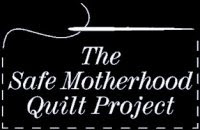The following is republished with permission of the Coalition for Improving Maternity Services, an organization committed to mother-friendly childbirth and endorsed by over 1,200 organizations and individuals, including myself.
Raleigh, NC (July 9, 2010)-The Coalition for Improving Maternity Services (CIMS) is outraged that the publishers of the American Journal of Obstetrics and Gynecology (AJOG) accepted a poorly designed and methodologically unsound study in which authors concluded there is a 3-fold increase in neonatal mortality in planned home births compared with planned hospital birth.
"In our analysis of multiple studies from countries worldwide," stated CIMS Chair Michelle Kendell, MBA, AAHCC, "CIMS found that the authors of the study included confounding data, such as outdated and low-quality studies, low-risk and high-risk mothers, babies born preterm, babies unintentionally born at home, births attended by unqualified providers, and data from birth certificates that researchers have found to be notoriously inaccurate."
Although the authors acknowledged that most of the articlesreviewed had similar outcomes of low neonatal mortality, they based their conclusion on statistics drawn from questionable and poor quality studies.
Furthermore, the study's lead investigator Joseph R. Wax, MD, and his co-authors inexplicably eliminated the only high-quality study of planned homebirths in the U.S. that showed excellent health outcomes for infants and their mothers when attended by certified professional midwives. (Johnson & Daviss BMJ 2005).
In a press release, the American College of Nurse-Midwives, a CIMS Organizational Member, reported, "the authors' conclusion differs significantly from findings of many recent high-quality studies on home birth outcomes which found no significant differences in perinatal outcomes between planned home and planned hospital births."
Other research conducted by the CIMS Expert Work Group found that planned home births with a qualified care provider resulted in similar, not greater, perinatal mortality rates compared with a similar low-risk population of women having hospital births, despite lower intervention rates, including electronic fetal monitoring, use of IVs, pain medication, instrumental deliveries, and cesarean sections.
Lamaze International, a CIMS Organizational Member, also questioned the study's conclusion. Amy Romano, MSN, CNM, researcher and contributor on Lamaze International's Science & Sensibility blog, wrote, "high quality studies, conducted in low-risk women in integrated maternity care systems, find no excess risk for babies and significant benefits for mothers."
The Centers for Disease Control (CDC) reports that babies born at home are less likely to be born preterm and low birth weight compared to babies born in the hospital.
Mary Lawlor, CPM, president of the National Association of Certified Professional Midwives, a CIMS Organizational Member, stated the study "is far from the high-quality rigorous review that health care providers and the public expect."
Also, commenting on the study, Geradine Simkins, CNM, MSN, president of the Midwives Alliance of North America, a CIMS Organizational Member, stated, "The American public, particularly women in the childbearing years and those who care for them, have a right to high quality research on childbirth. Research literature should not be used to cause undue alarm or limit a woman's choice regarding care providers, including skilled midwives, and place of birth."
The study at the heart of this debate, "Maternal and newborn outcomes in planned home birth vs planned hospital births: a metaanalysis", originally intended for print publication in the September 2010 issue of the American Journal of Obstetrics and Gynecology (AJOG), was published online on July 1. Researchers and critics suspect that the early release was politically motivated to discredit midwives who attend the majority of home births in the U.S. and to discourage legislators from passing increasingly pro-midwife state legislation such as New York State's Midwifery Modernization Act (Bill S5007a/A8117b), which passed on June 28 with overwhelming bipartisan support, providing autonomous practice for all licensed midwives working in all settings.
CIMS' advisor, Dr. Michael C. Klein, a senior scientist at the Child and Family Research Institute in Vancouver and emeritus professor of family practice and pediatrics at the University of British Columbia believes this is "an unabashed attempt to have poor science cover-unsuccessfully-a political agenda. I am very surprised that the [Journal] would publish it, let alone call it 'Editors Choice'."
According to the CDC, the number of women opting to have their babies at home has been increasing since 1990 and rose by 5% in 2005 and remained steady in 2006. This is significant because it marked the first time in 14 years that the percentage of out-of-hospital births increased in the U.S. In 2006 there were 4.2 million births in the U.S., of which approximately 25,000 (.59%) were home births. About 61% of home births were attended by midwives. Among midwife-delivered home births, one-fourth (27%) were delivered by certified nurse-midwives, and nearly three-fourths (73%) were delivered by other professional midwives.
"Women choose to have a home birth for many reasons," states Nicette Jukelevics, chair of the CIMS Coalition Building Committee. "For financial, cultural or religions concerns, lack of transportation in rural areas, or to give birth in a supportive, low-intervention, familiar environment. Other countries like Great Britain, Ireland, Canada, and the Netherlands support women's choice for home birth. The unsubstantiated controversy against planned homebirth with a qualified provider has been with us for many decades. It's time that women in the U.S. have the same right and opportunity to give birth as they choose."
About CIMS: The Coalition for Improving Maternity Services (CIMS) is a coalition of individuals and national organizations with concern for the care and wellbeing of mothers, babies, and families. Our mission is to promote a wellness model of maternity care that will improve birth outcomes and substantially reduce costs. This evidence-based mother-, baby-, and family-friendly model focuses on prevention and wellness as the alternatives to high-cost screening, diagnosis, and treatment programs. Media Inquiries: Denna Suko (919) 863-9482, dsuko@motherfriendly.org.




















No comments:
Post a Comment